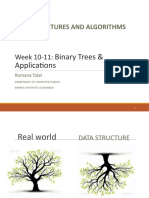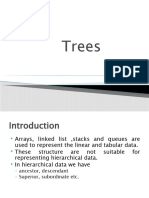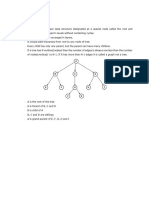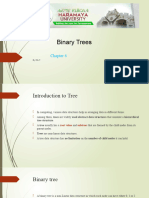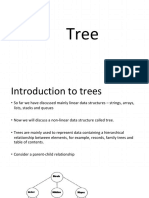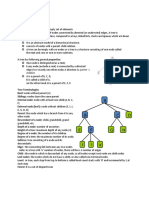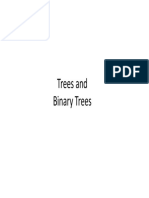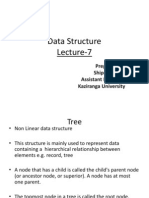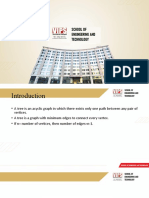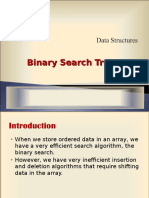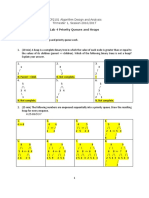0% found this document useful (0 votes)
74 views41 pagesIntro To Trees-I
A binary tree is a data structure in which each node has at most two children. It is either empty or consists of a root node and two disjoint binary trees called the left and right subtrees. Binary trees can be strictly binary, complete, degenerate, or almost complete depending on whether nodes have zero, one, or two children. Common operations on binary trees include traversal (inorder, preorder, postorder), searching, insertion, and deletion in binary search trees which keep the left subtree less than the root and right subtree greater than the root.
Uploaded by
geek inceptionCopyright
© © All Rights Reserved
We take content rights seriously. If you suspect this is your content, claim it here.
Available Formats
Download as PDF, TXT or read online on Scribd
0% found this document useful (0 votes)
74 views41 pagesIntro To Trees-I
A binary tree is a data structure in which each node has at most two children. It is either empty or consists of a root node and two disjoint binary trees called the left and right subtrees. Binary trees can be strictly binary, complete, degenerate, or almost complete depending on whether nodes have zero, one, or two children. Common operations on binary trees include traversal (inorder, preorder, postorder), searching, insertion, and deletion in binary search trees which keep the left subtree less than the root and right subtree greater than the root.
Uploaded by
geek inceptionCopyright
© © All Rights Reserved
We take content rights seriously. If you suspect this is your content, claim it here.
Available Formats
Download as PDF, TXT or read online on Scribd
/ 41


